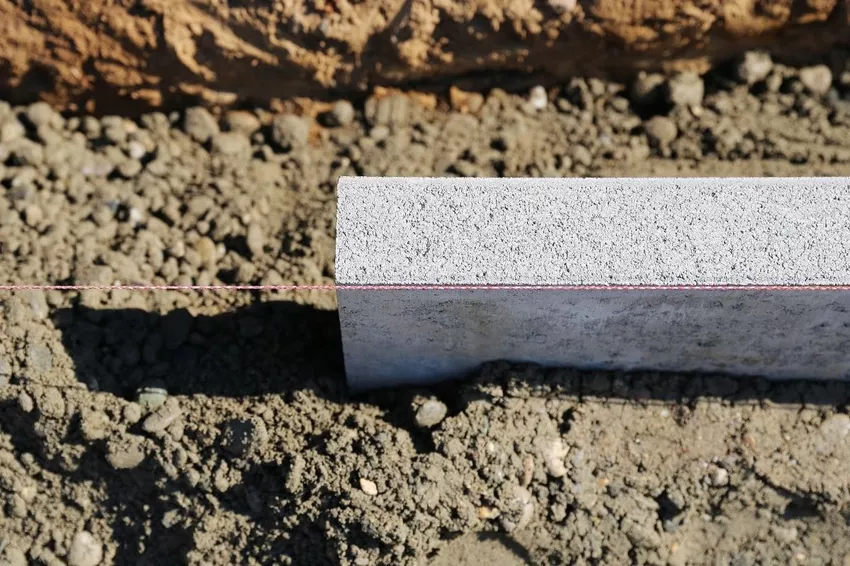- ratio and quantity
- The lean concrete
- The mixing ratio
- sand or gravel?
- compressive strength
- frequently asked Questions

Curbs are often used around the house and garden. In order for the curbs to hold up in the long term, set them in concrete. The mixing ratio of the building material is decisive.
In a nutshell
- Concrete consists of water, cement and sand or gravel
- Lean concrete is suitable for setting curbs
- with lean concrete the proportion of cement is lower. The gravel/cement ratio is 8:1
- independent mixing is no problem for small and medium-sized quantities
- add water sparingly so that the mixture is semi-moist
ratio and quantity
The building material concrete consists of three different components:
- water
- cement
- Sand gravel
The correct ratio of the components is decisive for the operational capability. Depending on the project, you must calculate the required quantity.

The lean concrete
Lean concrete is a type of concrete that has a low cement content. In addition to setting kerbstones, the concrete is suitable for the following areas of application:
- set fence posts
- set palisades
- Make plaster bed
- even out unevenness
- to lay pipes
Notice: Many gardeners and do-it-yourselfers associate lean concrete with a liquid building material. However, this is rather dry and is processed earth-moist.
The mixing ratio
When preparing the concrete for setting curbs, the mixing ratio is crucial. Gravel and cement should move in an 8:1 ratio. First put the sand/gravel and cement in the recommended mixing ratio in a container. If necessary, mix in water until the consistency of the mixture is semi-dry.
Tip: Exact weighing is not required when mixing concrete. Use a shovel to mix the concrete at an 8:1 ratio. Gradually add water to the mixture!

sand or gravel?
The grain size of gravel and sand should be between 0-8 mm. It depends on the application which grain size is best for the concrete mix. The coarser the grain, the more stable the mix of concrete and the more reliable the curbs will hold. In addition, the drainage is better with coarse grains.
compressive strength
The so-called lean concrete is pressure-resistant and is therefore suitable as a filling material. However, you should not fasten important components with lean concrete. This neither satisfies static requirements nor does it withstand strong pressure. However, setting curbs is not a problem.
Notice: If you're setting the socket in a busy parking lot, you can consider heavier-duty concrete mixes. Lean concrete is usually sufficient for the home garden.
frequently asked Questions
How much concrete is required for curbs?When laying curbs, you should build a concrete foundation that is at least 10-15 cm high. Tap the stones with a rubber mallet so that they sink into the concrete. With a back brace you increase the stability of your stones.
How to make the concrete mix without a mixer?Do-it-yourself production depends on the quantity required. For large quantities, there is no way around a concrete mixer, which you can borrow if necessary. Manual mixing by hand or a simple mortar mixer is suitable for small and medium-sized quantities of concrete.